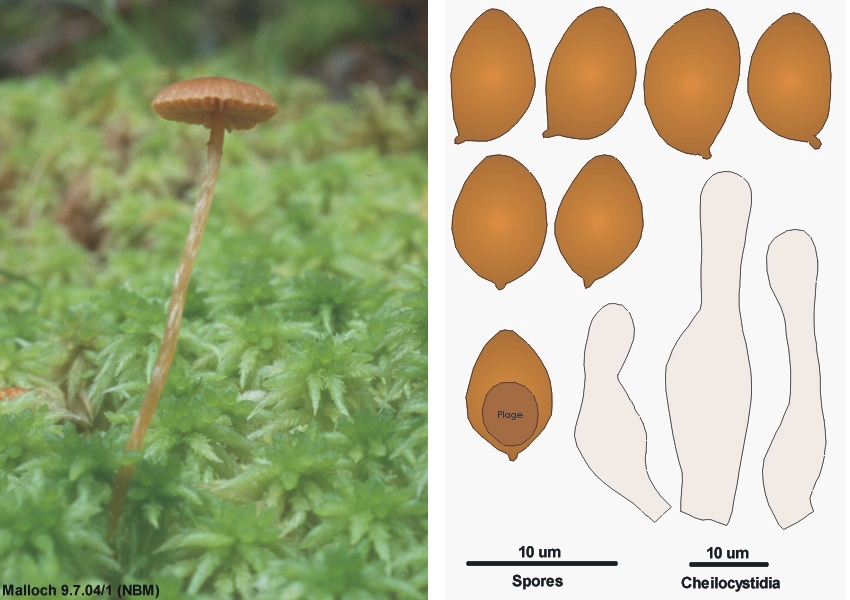Fleshy Fungi of New Brunswick >>
Galerina paludosa
A Focus on Species >>
Galerina paludosa
Galerina paludosa (Fr.) Kühner

Galerina paludosa is a typical Galerina, and as such should be difficult to recognize in the field. However, its overall appearance and its habitat make it distinctive. It is found only among peat mosses (genus Sphagnum) in bogs and wet woods, either alone or in small groups. Because the mosses it grows on are usually very tall and form deep carpets G. paludosa must have a very long stipe. When you collect it, be sure to follow its stipe down to its point of connection or you will break it off. The stipe is also distinctive in having streaks or bands of white veil material and often a fibrous or membranous annulus. The cap is rusty brown, a typical colour for Galerina species, and marked by radiating lines from its centre to its margin.
Under the microscope G. paludosa is again distinctive. Unlike many species of Galerina it lacks pleurocystidia, the elongated sterile structures extending out beyond the level of the spores from the sides of the gills. In common with all Galerina species it has characteristic cheilocystidia at the edges of the gills. In G. paludosa these are fairly stout and shaped more or less like bowling pins. The basidiospores are not as roughened as those of most Galerina species, although some with fine roughening can be found in most mounts. Curiously, mature basidiospores from a spore print appear smoother than those still attached to the gills. In spite of being nearly smooth the plage can usually be seen in some.
Photo: D. Malloch